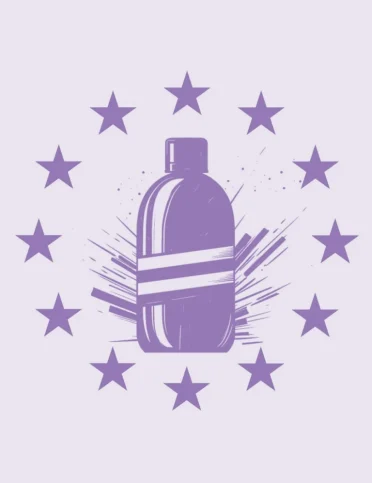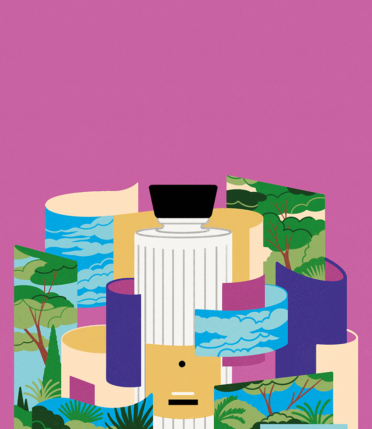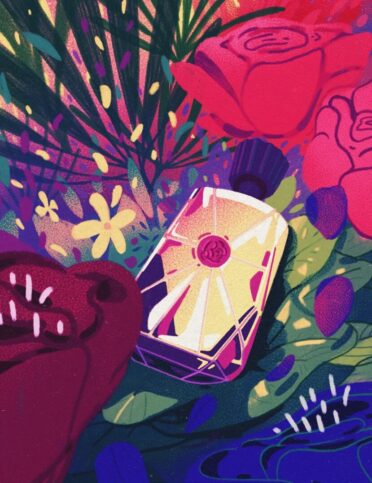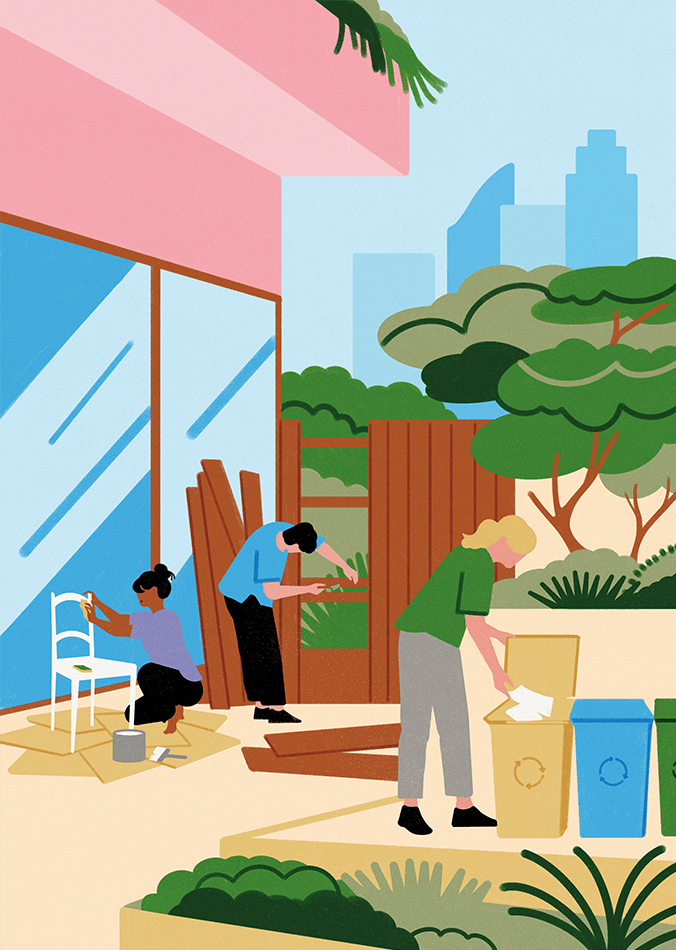Reuse, recycling, circularity
Reuse, recycling, circularity: how can we (really) change people’s attitudes?
How can we make the circular economy more appealing?
Despite being a recent phenomenon in the history of humankind, throwaway culture is now so deeply rooted in our daily lives that it often seems like the only option. What psychological and sociological drivers can be employed to promote the widespread adoption of eco-friendlier alternatives?
The “luxe” hashtag has taken TikTok by storm. Whether featuring a Chanel handbag or a Hermès bracelet, the “unboxing” of branded products has captured the public imagination, a reminder that ribbons, sturdy cardboard boxes and tissue paper are an essential part of the luxury brand experience. In the captions for these videos, one phrase comes up time and again: “Packaging is everything”.
The more expensive the product, the more layers of packaging there will be. It may have as many as five or six layers of packaging. It could be a small glass jar of cream, which is then wrapped in fabric, before being placed in a cardboard box...
According to Sylvie Borau, Professor of Marketing at the Toulouse Business School, “perceived quality” is one of the main barriers to low-energy packaging, without multiple, excess containers (although sometimes necessary to protect the product)
This belief is deeply rooted in our psyche, she explains: “The more expensive the product, the more layers of packaging there will be. It may have as many as five or six layers of packaging. It could be a small glass jar of cream, which is then wrapped in fabric, before being placed in a cardboard box.” Material thickness also has an impact, as does the use of color or “pure” white, which requires the use of chemicals.
However, perceptions are changing. In 2018, a study conducted by IFOP demonstrated that natural products now symbolize efficacy for over half of consumers.
For a very long time, we became used to seeing ads for beauty products that contained complicated chemicals. It seemed very scientific. The less natural it looked, the more effective it seemed.
Beyond these perceptions, consumers – despite being increasingly aware of ecological issues – are met with a whole host of psychological barriers that inhibit behavioral change. “Ever since we first started mining coal, everything possible has been done to make our lives easier,” says Anthropologist, Dominique Desjeux. Nevertheless, “managing environmental issues inevitably adds to our mental load,” notes the author responsible for the work “Sur la Réception des Innovations”, (Puf, 2023). The fact is that opting for throwaway products is much easier and involves less effort than repairing goods or taking glass packaging to the local recycling facility. In his book, “Le Bug Humain” (Robert Laffont, 2019), Journalist and Doctor of Neurosciences, Sébastien Bohler, explains that the structure of our brains – and in particular an area known as the striatum which releases dopamine when our desires are satisfied – spontaneously steers us towards the option that provides the most immediate gratification.
The main factor of change is not values or good intentions, but constraints
Emotions can also be influential. Individuals may feel “threatened” or, conversely, “reassured” by change, explains the anthropologist, citing the freshness of fruit and vegetables as an example, a key element for consumers.
“One of the problems with bulk buying is that we’ve lost skills acquired in the past for selecting unpackaged products, using touch, sight and smell, etc.” Will these skills need to be relearned in the future, when unpackaged products are available on a mass scale?
There may be even more profound reasons for this reluctance to embrace eco-friendly behavior. At a time when the adage “I consume, therefore I am” has become deeply ingrained in our society, adopting eco-friendly habits also shapes our identity, explains Dominique Desjeux. For example, he contrasts doing DIY, predominantly a male-dominated activity, with adopting a zero-waste approach, a practice mainly associated with upper class women. This observation is supported by Sylvie Borau in an article published on The Conversation website:
“On average, men are less inclined to adopt environmentally-friendly behavior than women. As green consumption is implicitly viewed as a feminine behavior, men’s reluctance may be unconsciously fueled by a fear of appearing feminine, and therefore, perhaps unattractive in the eyes of the opposite sex.”
There is some overlap between these differences and certain social factors. An analysis published in an article by Sociologists Jean-Baptiste Comby and Hadrien Malier noted that, among the working classes, so-called “eco-friendly” behavior, such as recycling, DIY and repairs, are often borne out of material and financial necessity. These constraints also limit their capacity to adopt practices that do not stem from this necessity, such as recycling waste. The researchers describe a form of “inertia” in the lifestyles of working-class people, combined with an “awareness of [their] minimal responsibility” in terms of pollution, compared to the middle and upper classes.
Responsibility for change lies first and foremost with companies
So, how can we bring about a broader change in the attitudes of society as a whole, without neglecting the various constraints faced by certain categories of the population? Social norms may provide a solution, suggests Dominique Desjeux, while pointing out that consumer behavior is only a “part of the problem” and that “responsibility for change lies first and foremost with companies” which will need to change their practices. For example, by offering eco-friendly packaging, i.e. packaging that is both resource-efficient (where just enough is used to fully protect the product) and easy to recycle.
Social norms also form the basis of “Nudge Theory” in behavioral science. These “nudges” have a psychological effect that encourages consumers to opt for the most responsible choice or behavior, almost without realizing it. As highlighted in a report by Fabrique Écologique, this process may involve “drawing attention to a particular behavior demonstrated by the majority of individuals in the immediate environment (neighbors, colleagues, etc.), for example, by explaining that “90% of the neighbors recycle their waste”… “while sometimes even inflating the statistics”. However, many observers have noted the variable effectiveness of these “nudges”, whose much-vaunted magical powers do not seem to effect lasting change.
To bring about a longer-term change in attitudes, a more in-depth approach is required which plays on our emotions (positive emotions where possible). For Sylvie Borau, one thing is certain, as studies on alcohol and cigarette consumption have clearly shown, “guilt is not very effective when it comes to “pleasure”, beauty and wellness products, such as luxury goods and cosmetics.” Desire is a much stronger driver of behavior.
In this respect, the answer seems obvious: influencers on social media, “still work best with younger people today,” says Borau. Certain YouTube and Instagram stars like Marie Lopez, aka EnjoyPhoenix, are currently extolling the virtues of sustainable consumption. Founder of beauty and lifestyle brand, Leaves & Cloud, which promotes reusable packaging (such as the fabric pouches used in its boxes), Lopez was voted “eco-influencer” by Forbes magazine in 2022. So, could it be that lightweight, “natural”, recyclable and recycled packaging will be tomorrow’s major TikTok craze?

Sylvie Borau
Professor in Marketing Toulouse Business School Toulouse

Dominique Desjeux
Anthropologist, Emeritus Professor at the University of Paris-Cité, CEPED, Sorbonne Human Sciences.










